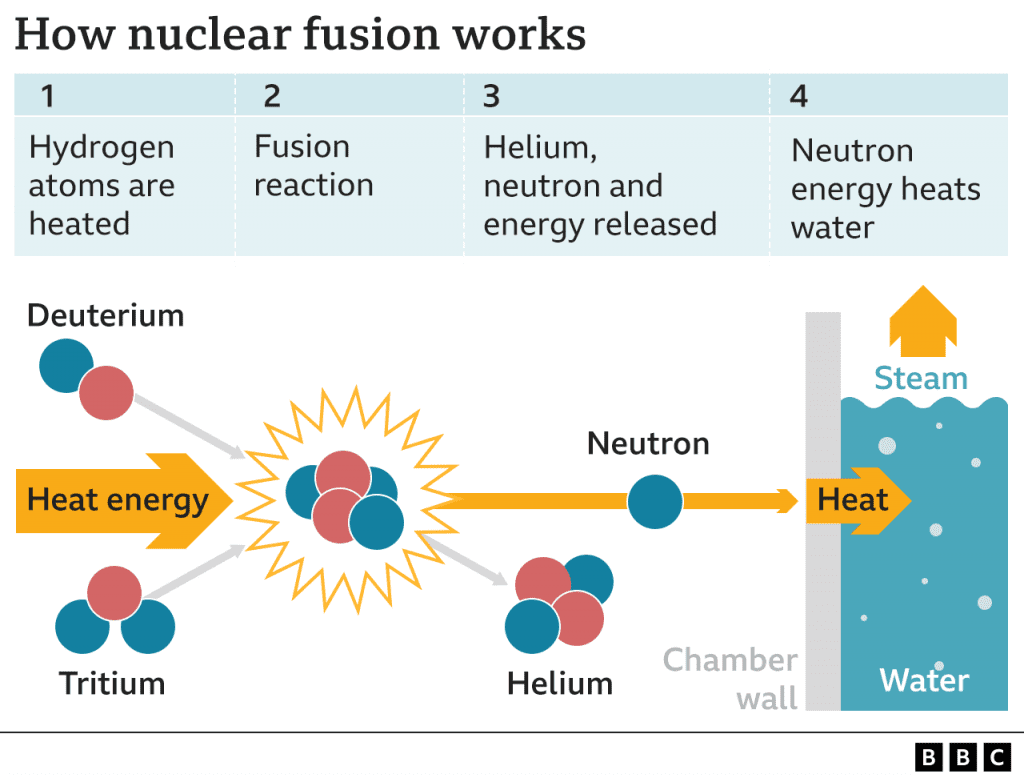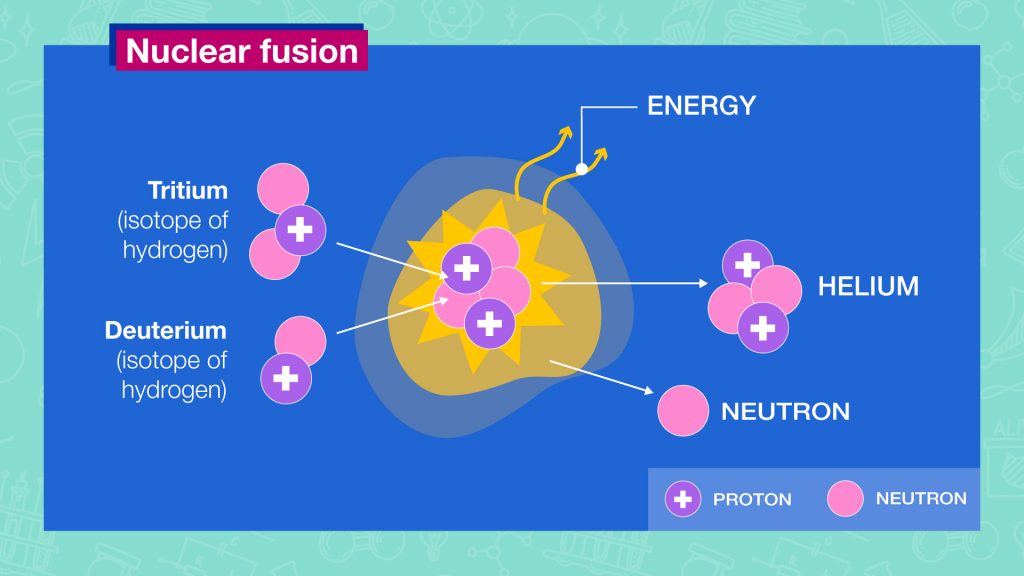US scientists announced on Tuesday that they had made a breakthrough in fusion energy. This could make it easier to use the process that powers the sun to make carbon-free electricity at a time when the world is trying hard to stop climate change.
What exactly is “fusion power”?
When two light atoms, like hydrogen, are heated to 100 million degrees Celsius (180 million degrees Fahrenheit), they merge into a single heavier atom and release a huge amount of energy. It’s not the same as fission, in which a reactor fires a neutron into a uranium atom, causing it to split into two smaller atoms.


What did the scientists end up doing?
Scientists at Lawrence Livermore used cutting-edge technology, like one of the world’s biggest lasers, to focus beams on a hydrogen isotope target smaller than a pea. This caused a fusion reaction that briefly made more power than was needed to start it.
Independent scientists have noted that the preliminary results show progress on work that has been going on for decades, but that fusion is still far from producing commercial-scale power.

Since the reaction released more energy than the laser could deliver to the target, nuclear energy expert Tony Roulstone from the University of Cambridge declared the experiment a success. However, the energy produced by the experiment accounted for only 0.5% of the enormous amount required to launch the laser. An energy gain equal to twice the energy input from the lasers would be an ideal engineering goal for fusion, according to Roulstone.
Will nuclear power fusion be a tool in the war on global warming?
Potentially. Scientists need to produce fusion reactions continuously at a rate of multiple times per second if they are to achieve their goal of greatly increasing the energy output from fusion.
To increase the size of that process to a power plant and to construct plants large enough to cover a sizable portion of the world’s expanding electricity demand would require enormous efforts, not to mention resources, land, and streamlined industrial regulations. Supporters of the status quo in energy and infrastructure may be slow to embrace change.
Countries should keep making strong strides in the wind and solar power, energy storage (including batteries), next-generation fission power, and other alternatives to fossil fuels as the search for fusion energy development over the next decade or more say scientists and environmentalists.
The main advantage of fusion over fission is that it should make much less radioactive waste.
How many different fusion energies are being developed?
The Fusion Industry Association says that private companies have raised about $5 billion from investors like oil companies, private people, and the government. Two of the eight companies that want to start fusion reactions with lasers are Focused Energy and First Light Fusion.
The fourth state of matter is plasma. It is made up of charged particles, and about fifteen companies, like Commonwealth Fusion Systems and TAE Technologies, are working on using strong magnets to hold this fusion fuel. About ten groups are looking into different ways to do this, like using magnets and lasers together.




